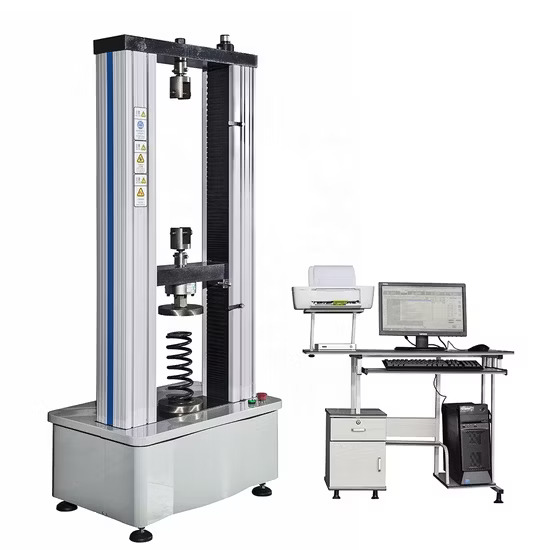Design Principles of Extension Springs:
Extension springs are crafted with precision, embodying a design that enables them to elongate when subjected to axial loads. The fundamental characteristics of these springs include:
1. Helical Structure: Extension springs feature a helical coil shape, akin to their compression counterparts, but with the distinction of having hooks or loops at the ends.
2. Material Choices: These springs are often constructed from materials such as stainless steel, music wire, or other alloys, selected based on factors like required force, temperature, and environmental conditions.
3. Wire Diameter: The thickness of the wire used in creating the spring influences its strength and load-bearing capacity.
4.Initial Tension: Extension springs come with an initial tension that keeps the coils together when the spring is in its relaxed state.
5. Ends and Hooks: The end configurations vary, with options including full loops, hooks, or threaded inserts, which allow attachment to other components.
Mechanics of Extension Springs:
Extension springs operate on a straightforward principle. When a load is applied to the spring, it stretches, storing potential energy within its coils. Upon release of the load, the spring contracts, releasing the stored energy and returning to its original length. This elongation and contraction cycle forms the basis of their functionality.
Applications Across Industries:
Extension springs are remarkably versatile and find their way into an array of applications:
Automotive: Trunk lids, hood mechanisms, and suspension components often utilize extension springs for their reliable tension.
Garage Doors: The smooth opening and closing of garage doors are made possible by extension springs.
Consumer Electronics: Extension springs power retractable cords, ensuring convenience and neatness in various electronic devices.
Medical Devices: Surgical instruments, retractable components, and diagnostic equipment leverage extension springs for precision movement.
Aerospace: Aircraft seating, storage mechanisms, and safety systems make use of these springs’ controlled tension.
Customization and Design Considerations:
Designing extension springs requires careful consideration of factors like desired tension, required force, and available space. Engineers can tailor these springs to suit specific needs by adjusting dimensions, material choices, and end configurations.
Safety Precautions:
Extension springs store energy when extended, and therefore, handling or installing them requires careful attention to safety measures. Proper installation techniques, secure attachment points, and correct tension settings are crucial aspects.
In Conclusion:
Extension springs exemplify the fusion of engineering precision and practical functionality. Their elongation mechanism, combined with a versatile design, makes them indispensable components in a wide spectrum of industries. With the ability to store and release energy, extension springs continue to play a pivotal role in shaping the dynamics of modern mechanical systems.



